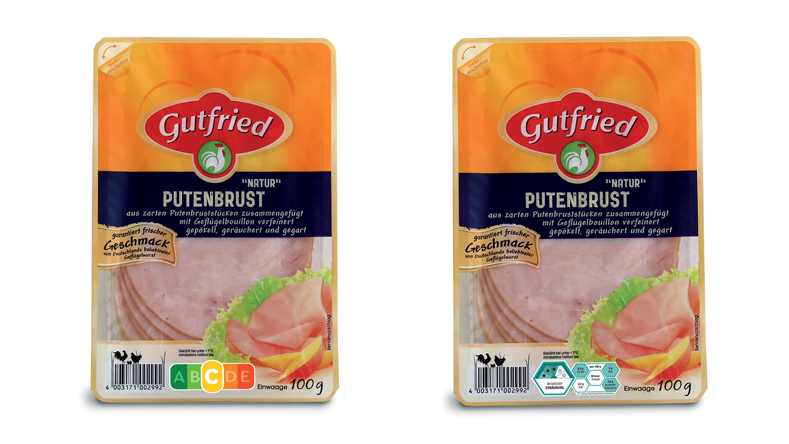Germans prefer the Nutri-Score
The majority of Germans are in favor of labeling food with the nutritional traffic light Nutri score off - this is the result of a representative survey by the Forsa Institute on behalf of several medical-scientific organizations and the consumer organization foodwatch. 69 percent of the people questioned preferred the Nutri-Score to the labeling model "Guide to nutrition" commissioned by Federal Minister of Food, Julia Klöckner. The "Guide to Nutrition" fell through with the majority of consumers: Only 25 percent were in favor of the model - the majority of those questioned rated it as "complicated" and "confusing" in comparison. The organizations called on Food Minister Klöckner not to lose any more time in the fight against malnutrition and to introduce the Nutri-Score as soon as possible.
"The survey shows: German consumers want the Nutri-Score. This nutritional value traffic light has previously proven its effectiveness in over 35 scientific studies," said Barbara Bitzer, spokeswoman for the scientific alliance DANK and managing director of the German Diabetes Society. "We expect that Federal Food Minister Julia Klöckner introduces the Nutri-Score as quickly as possible. A label that the majority of people find confusing is scientifically unacceptable. "
The Forsa Institute showed 1.003 selected consumers online as examples of foods that were labeled with the two nutritional models. Afterwards, the participants were asked, in a direct comparison, to evaluate which model is more understandable and which makes it easier to choose healthy foods. In the survey, those population groups who are particularly affected by malnutrition were in favor of the Nutri-Score. Three quarters of the respondents with a low formal level of education and those who were very overweight each preferred the Nutri-Score. Both groups also rated the Nutri-Score more often than helpful when choosing healthy products. On the other hand, a particularly large proportion of people who are very overweight found the "Guide to Nutrition" to be the more complicated label.
"The new labeling system must be understandable, especially for those population groups particularly affected by malnutrition and obesity," said Prof. Dr. Berthold Koletzko, Chairman of the Nutrition Commission of the German Society for Child and Adolescent Medicine: "If parents have a low level of education or are overweight, then their children have a significantly higher risk of becoming fat. The Nutri-Score apparently reaches these population groups well and can therefore effectively help to protect children from obesity. "
The survey also recorded how important certain properties are to consumers when it comes to labeling. A label must therefore above all be "clear" (72 percent consider this to be very important), "easily understandable" (70 percent) and "uncomplicated" (61 percent). Those questioned saw exactly these properties, especially in the Nutri-Score. In contrast, detailed information on the front of the packaging, such as the "Nutrition Guide", was far less important to people (35 percent).
"The survey clearly shows that the Nutri-Score delivers exactly what people expect - a quick, understandable orientation when shopping," said Prof. Dr. Hans Hauner, chairman of the German Diabetes Foundation and member of the advisory board of the German Obesity Society: "Politicians must finally implement this effective measure for a healthier diet."
Medical associations, specialist medical societies and consumer organizations have long been calling for binding measures to combat malnutrition and obesity - understandable nutrition labeling in traffic light colors is an important component in this. In the absence of a binding EU-wide regulation, several countries have now introduced traffic light markings on a voluntary basis. The Nutri-Score, developed by independent French scientists, is already being used in France and Belgium, Spain has announced its introduction and the introduction is also being discussed in Portugal, Luxembourg and Switzerland. The model makes an overall assessment of the nutritional composition of a product by offsetting nutritionally favorable and unfavorable nutritional components and classifying them on a color scale from green to red. With the Nutri-Score, the nutritional values of different foods such as frozen pizzas, breakfast cereals or fruit yoghurts can be compared at a glance.
Julia Klöckner presented the "Guide to Nutrition" in May; the state Max Rubner Institute developed the model on her behalf. In contrast to the Nutri-Score, this "honeycomb" model is not classified in traffic light colors.

Image copyright foodwatch: This is what Gutfried's turkey breast would look like - on the left with the Nutri-Score and on the right with the nutrition guide.
The survey was commissioned by:
German Alliance for Noncommunicable Diseases THANKS
foodwatch eV
German Diabetes Society
German Society for Child and Adolescent Medicine
German Diabetes Foundation
Professional association of paediatricians
diabetesDE - German Diabetes Aid
German Obesity Society
German Society for Nutritional Medicine
Also read: In other countries there has long been the Nutri-Score traffic light
